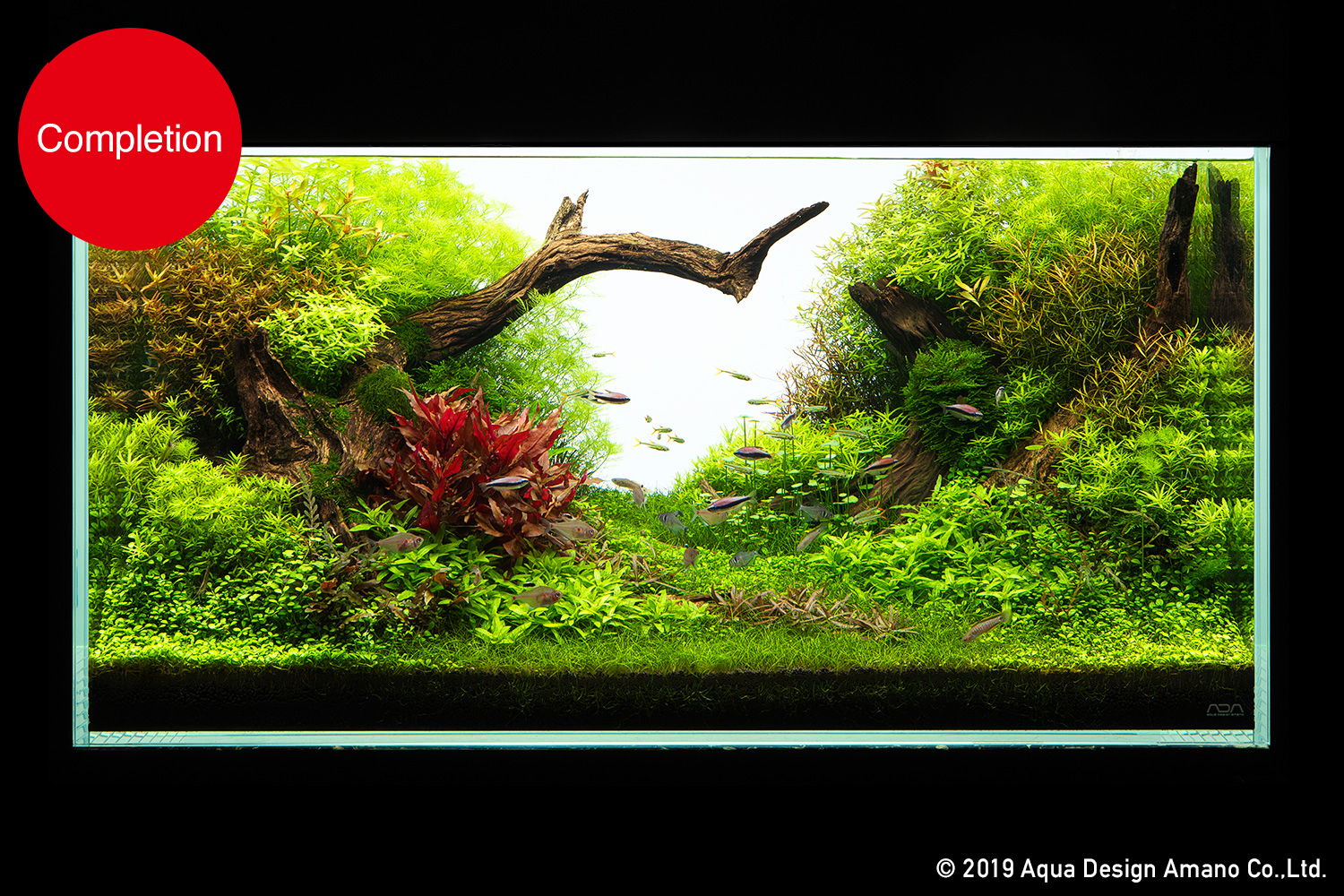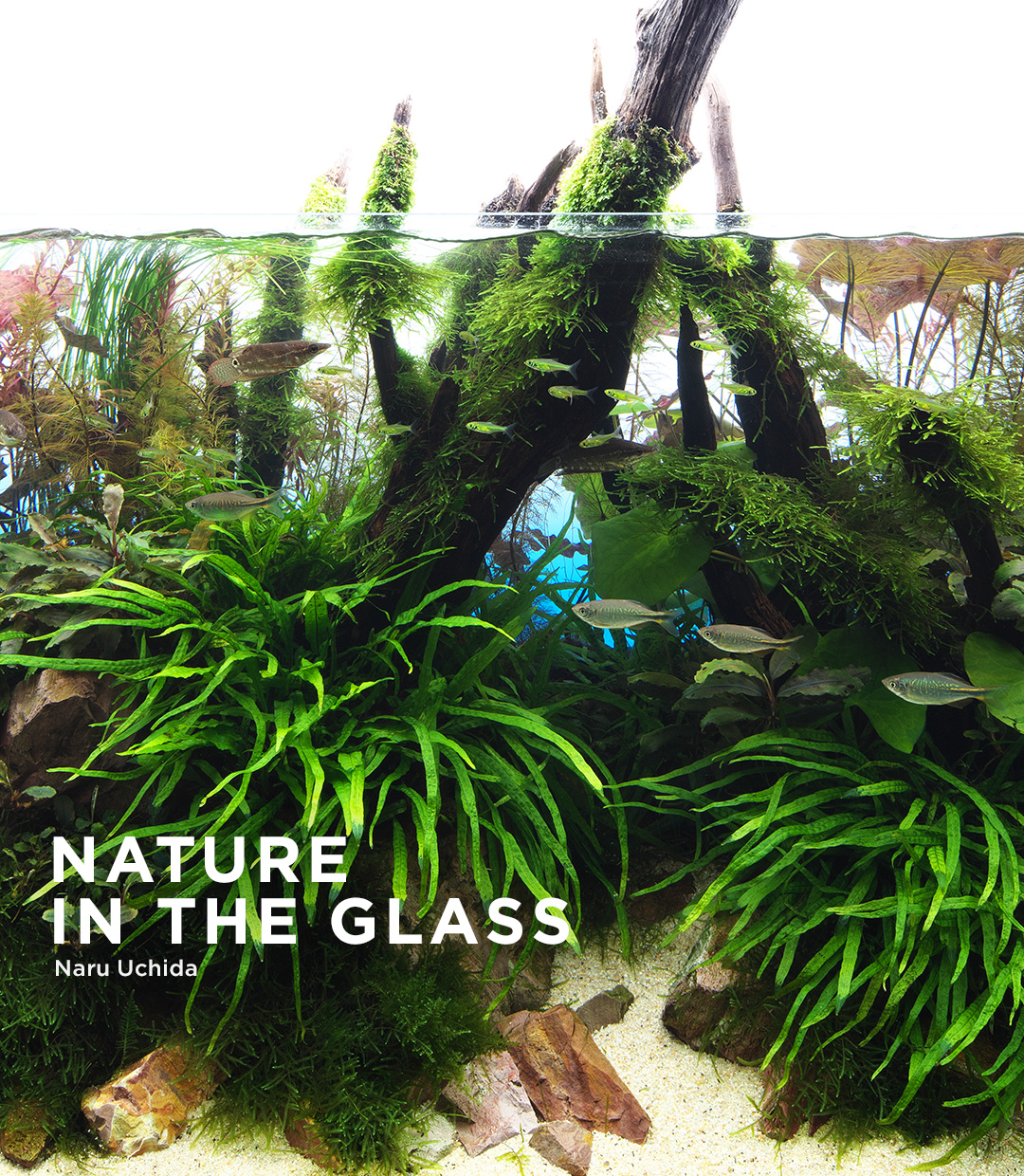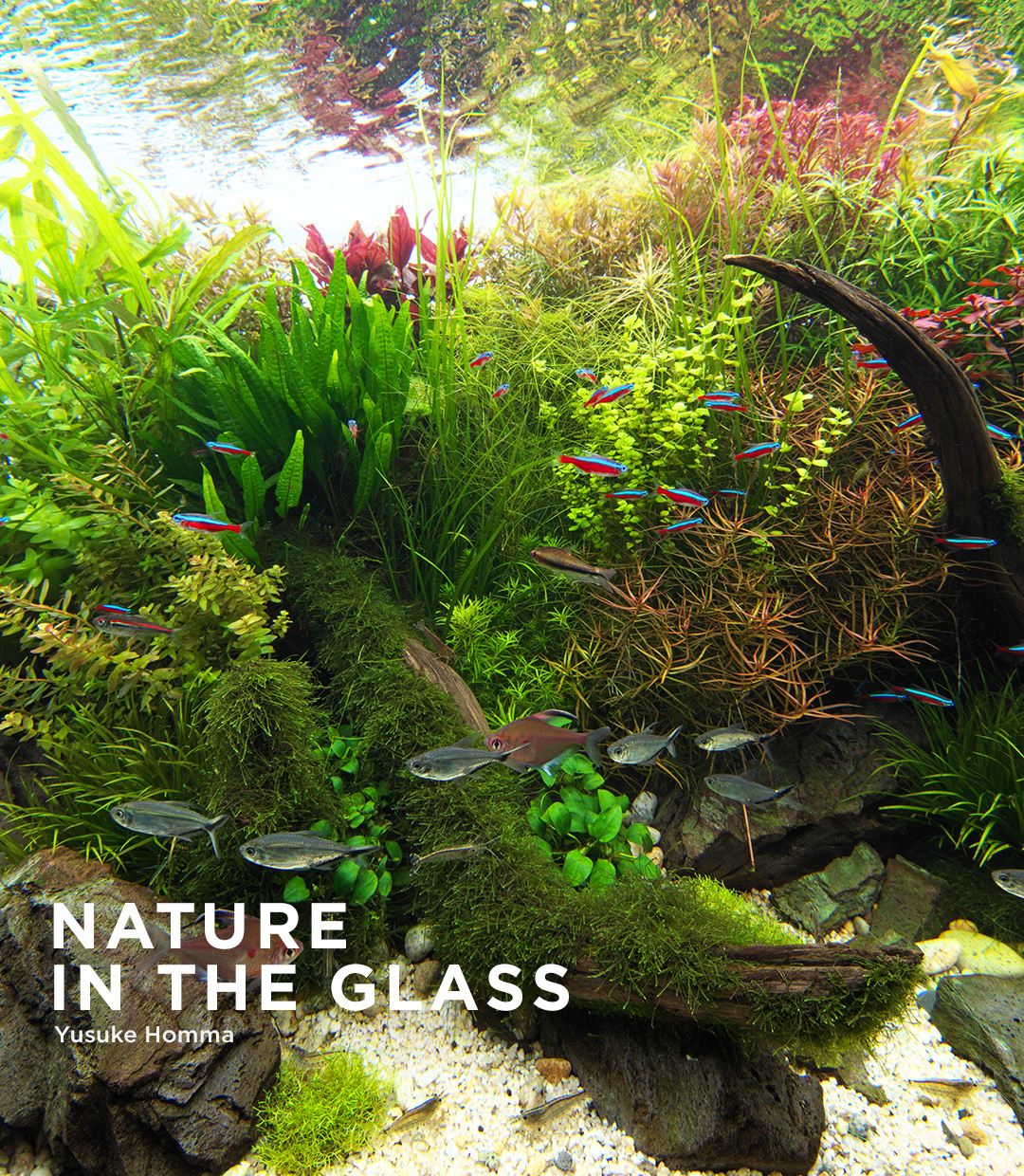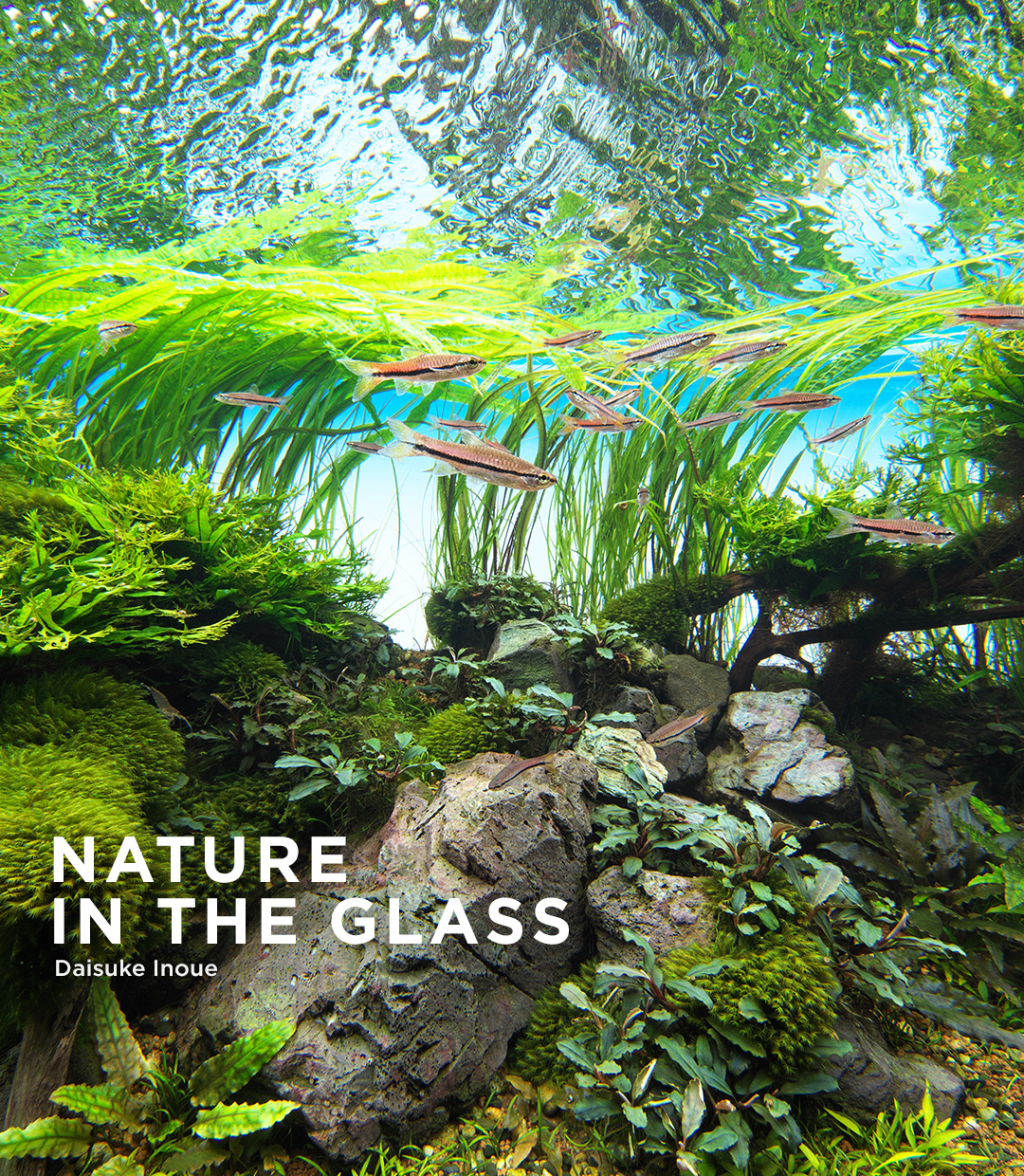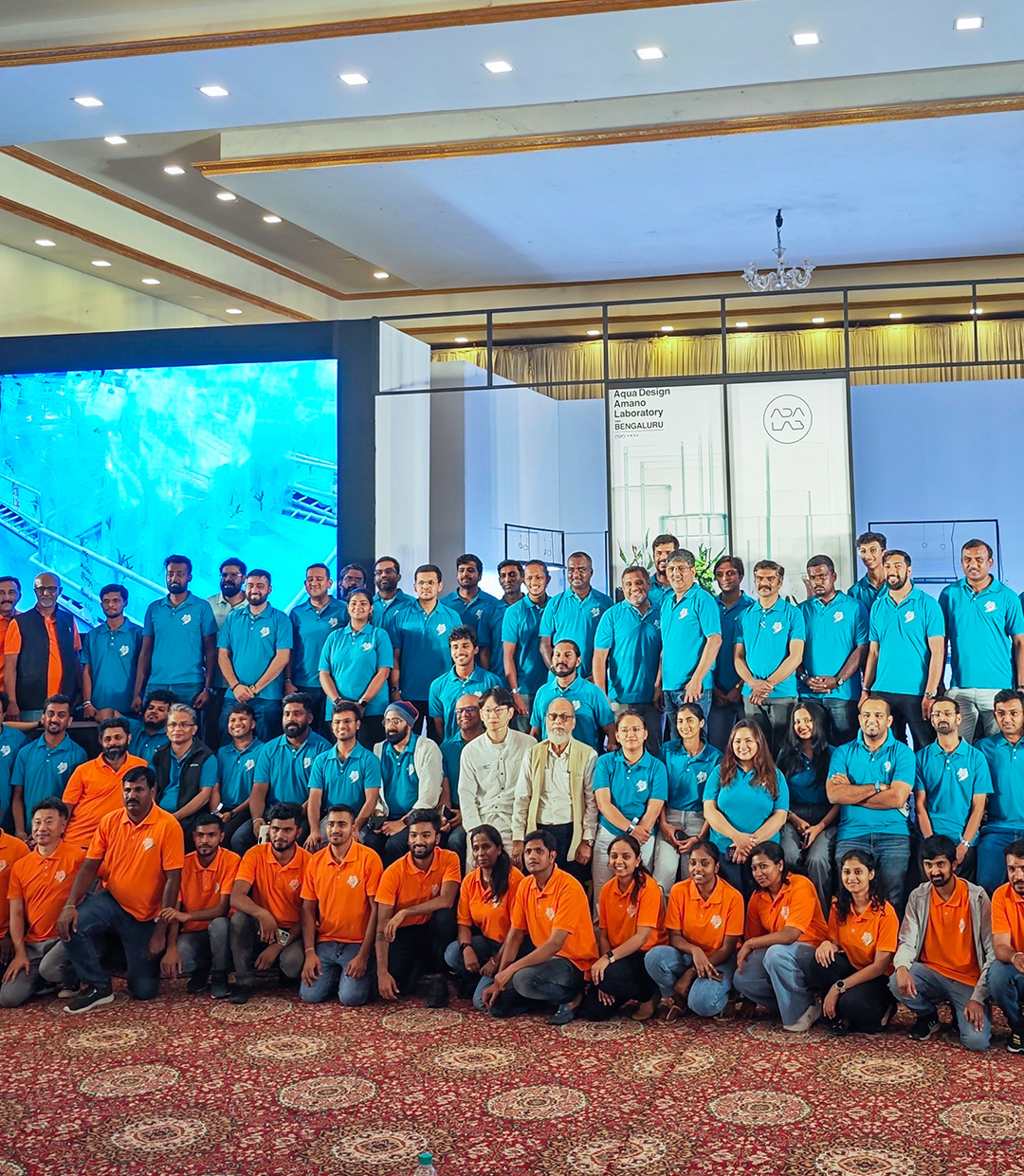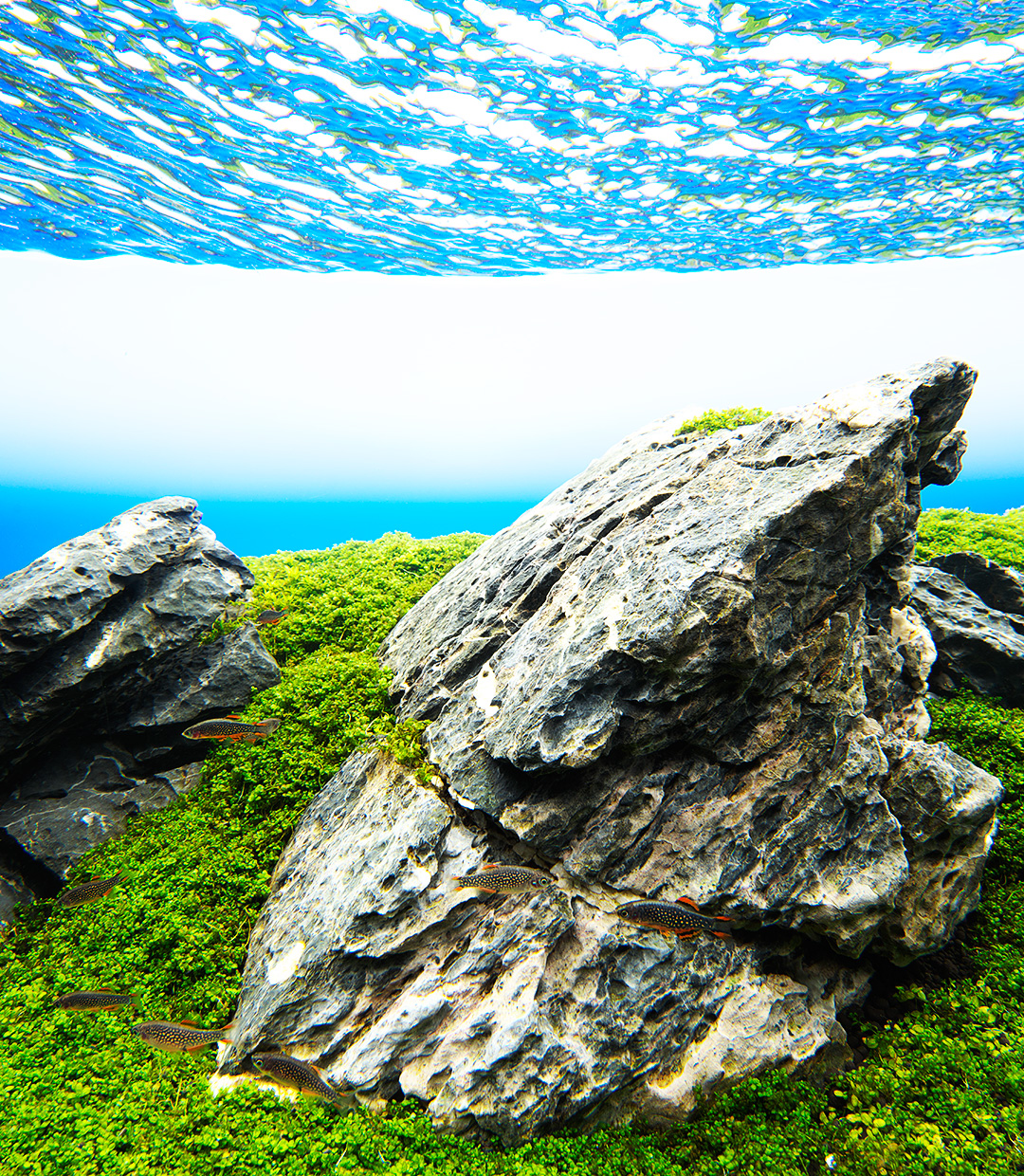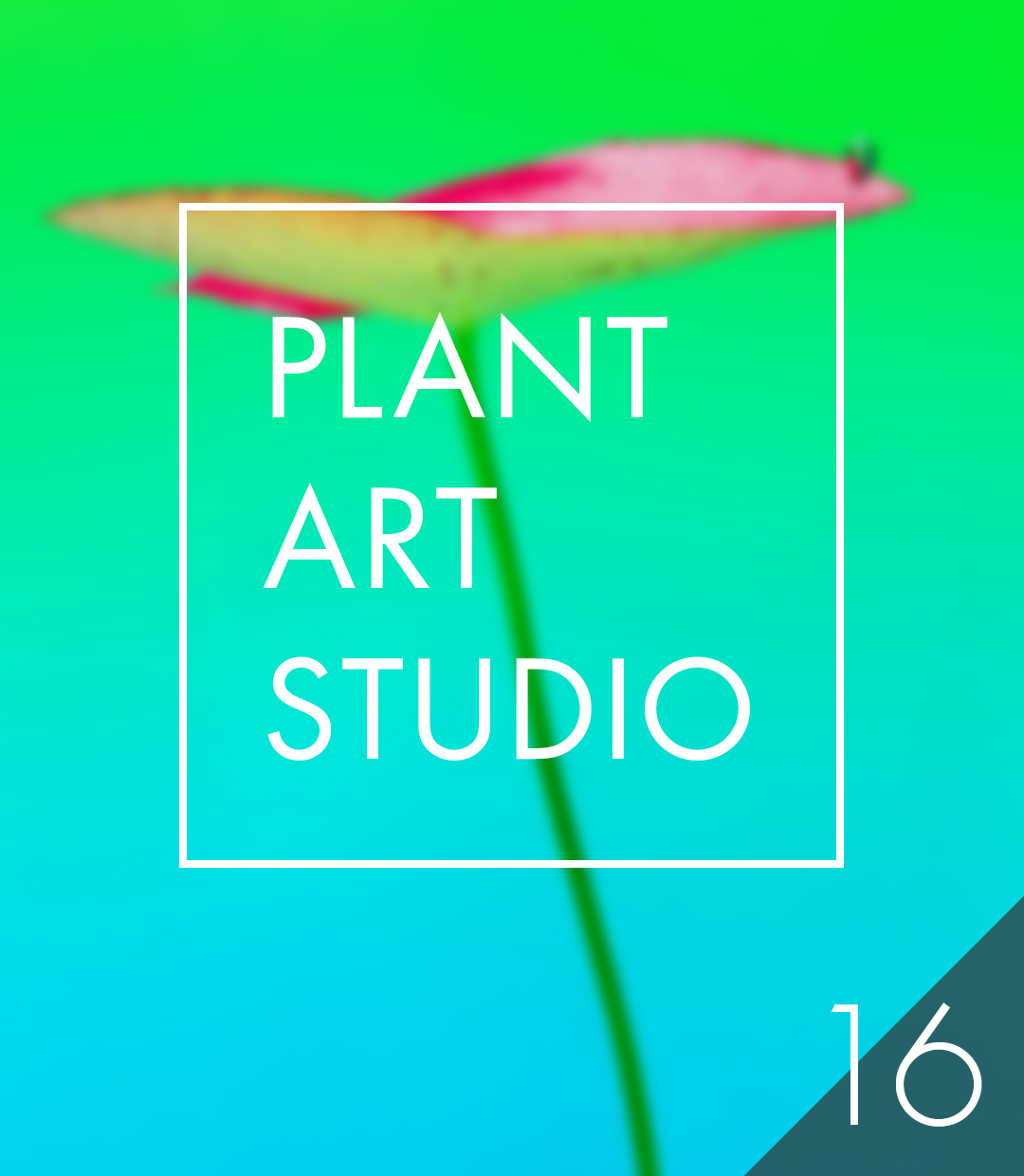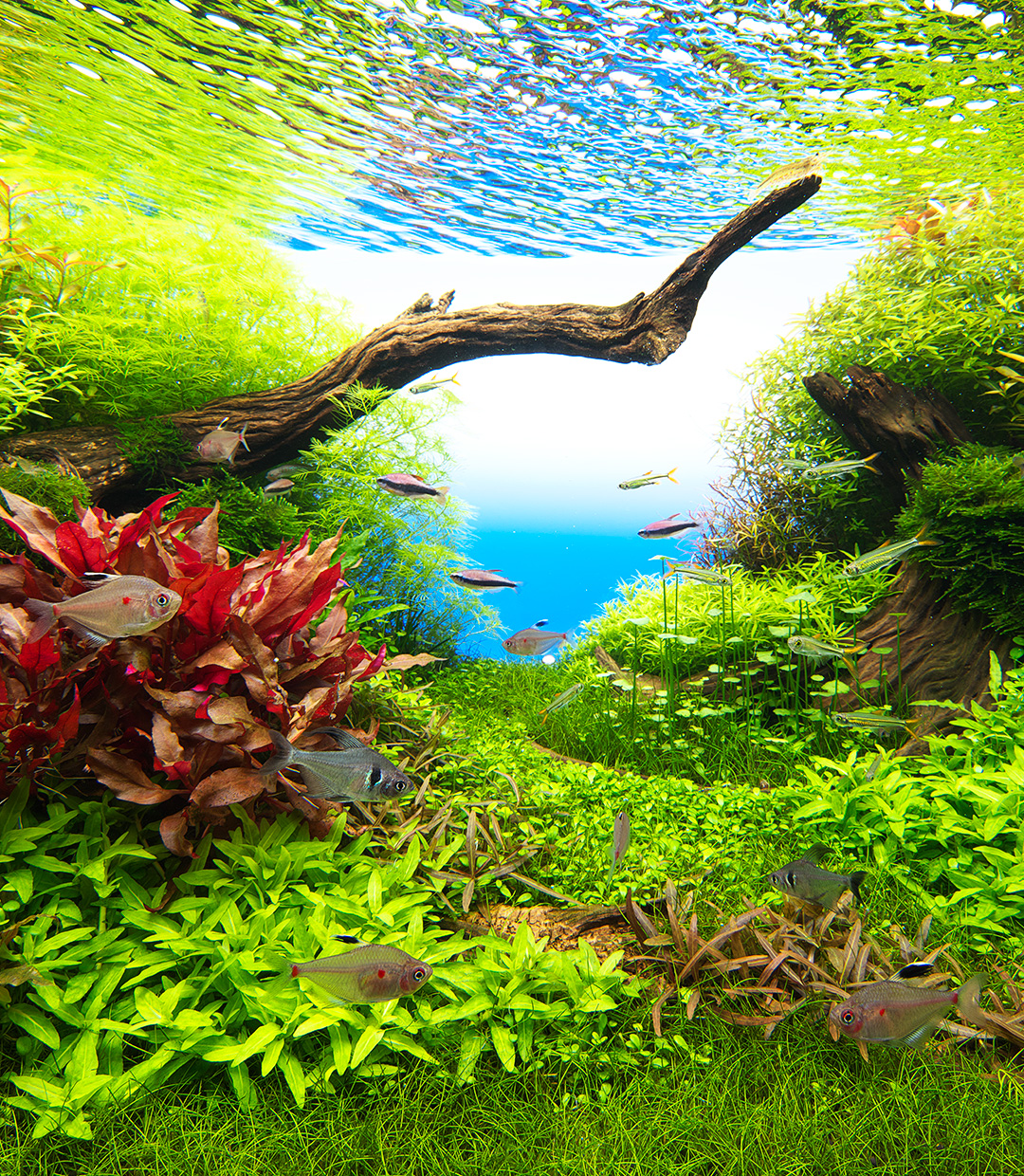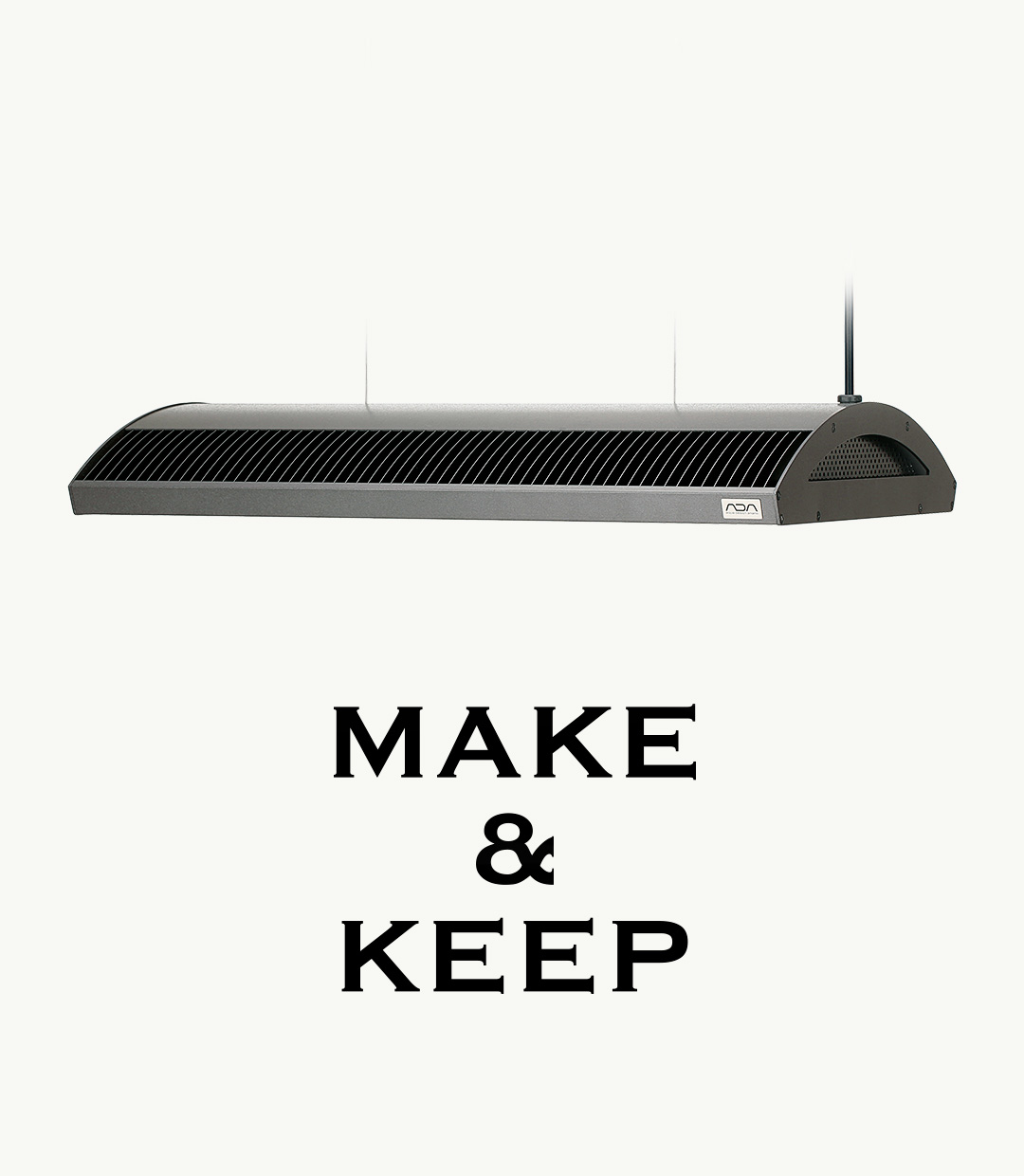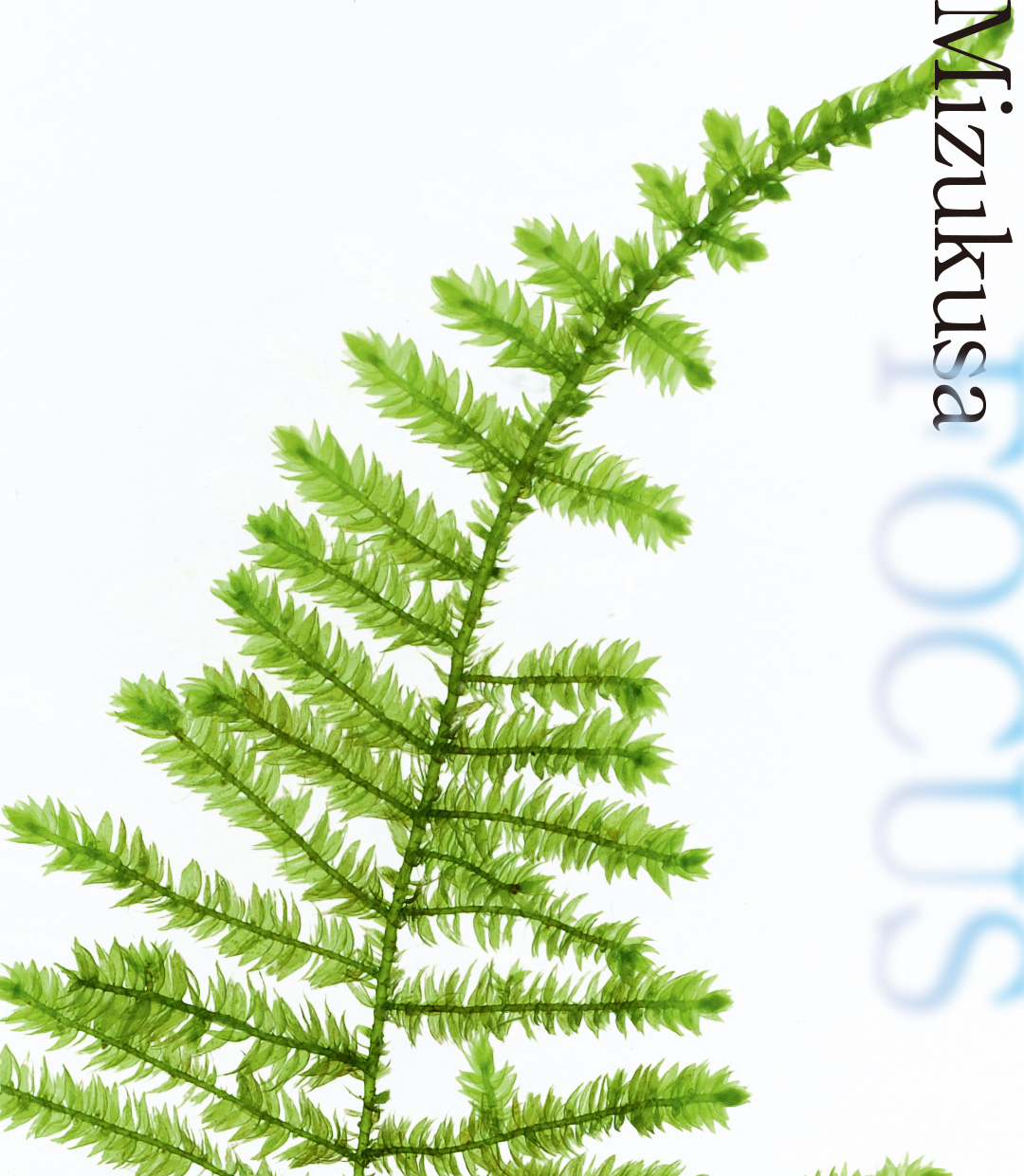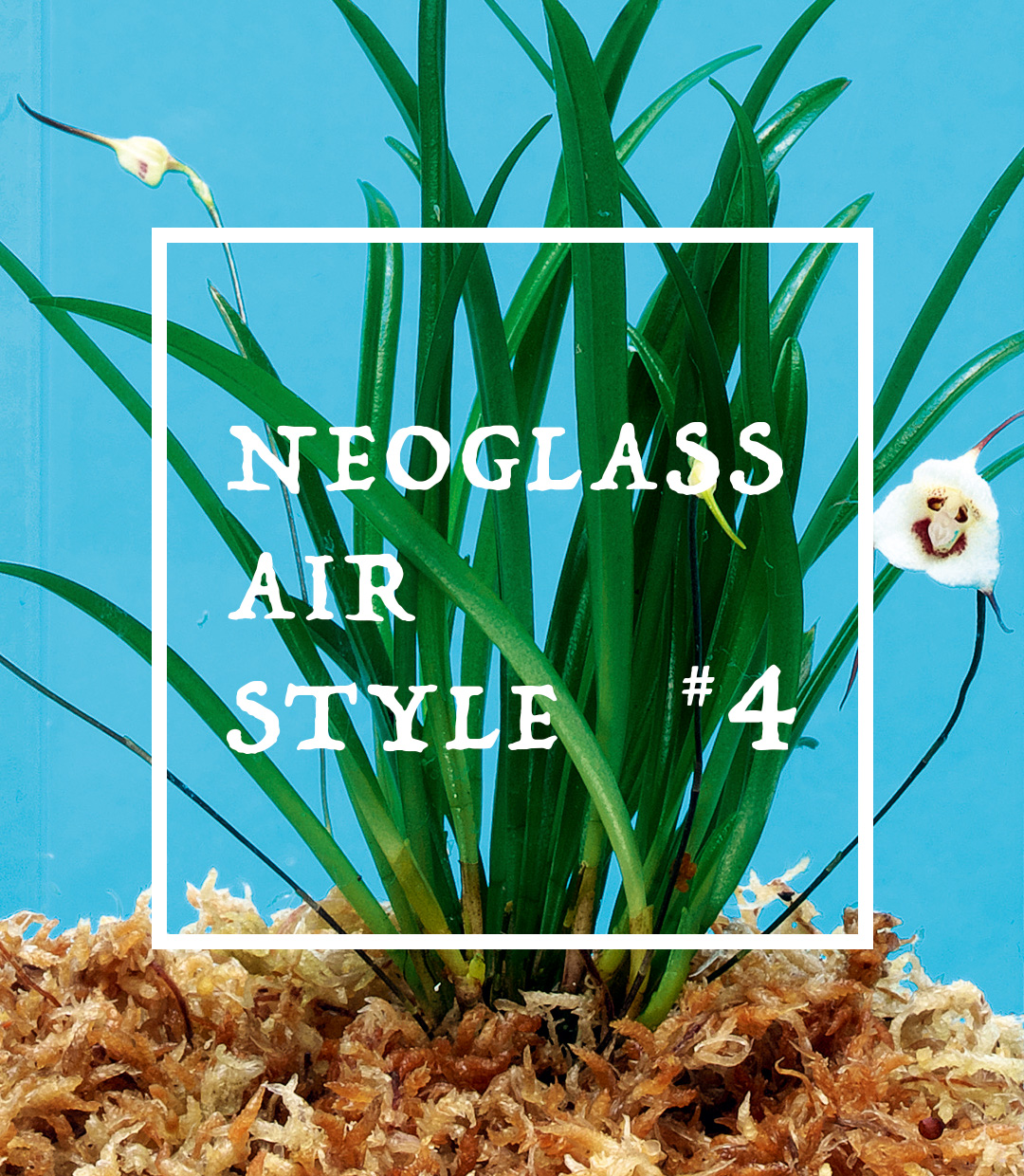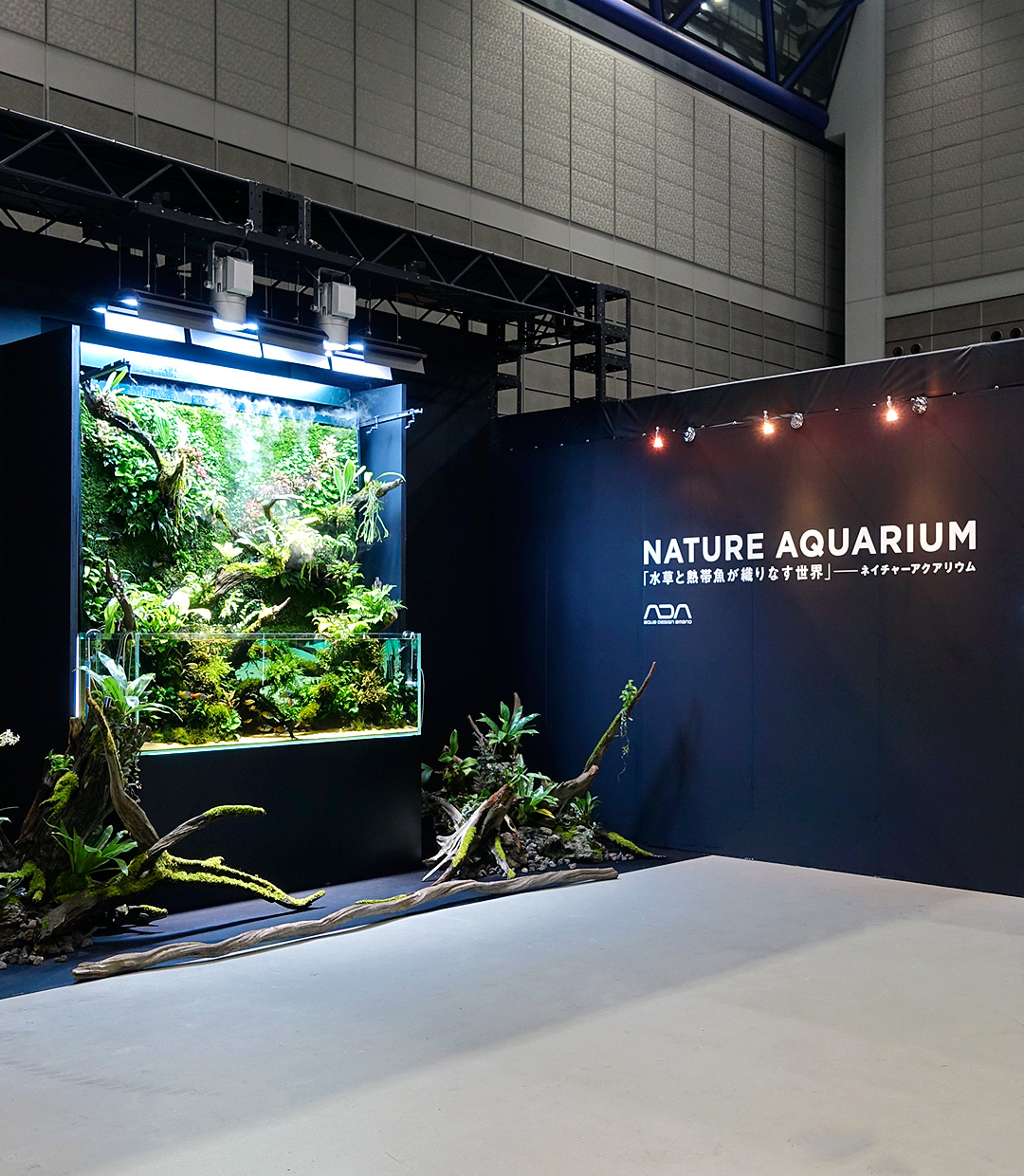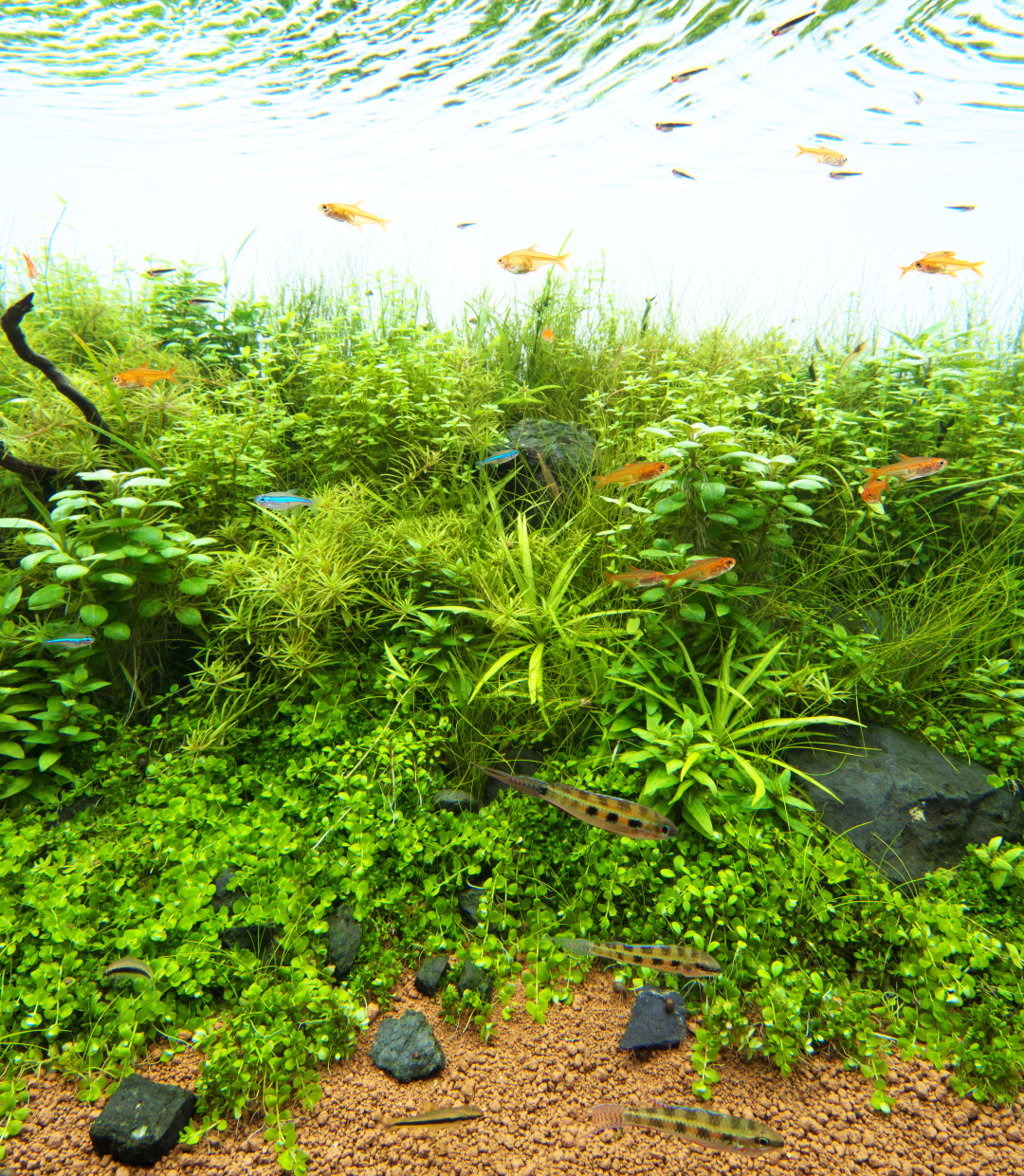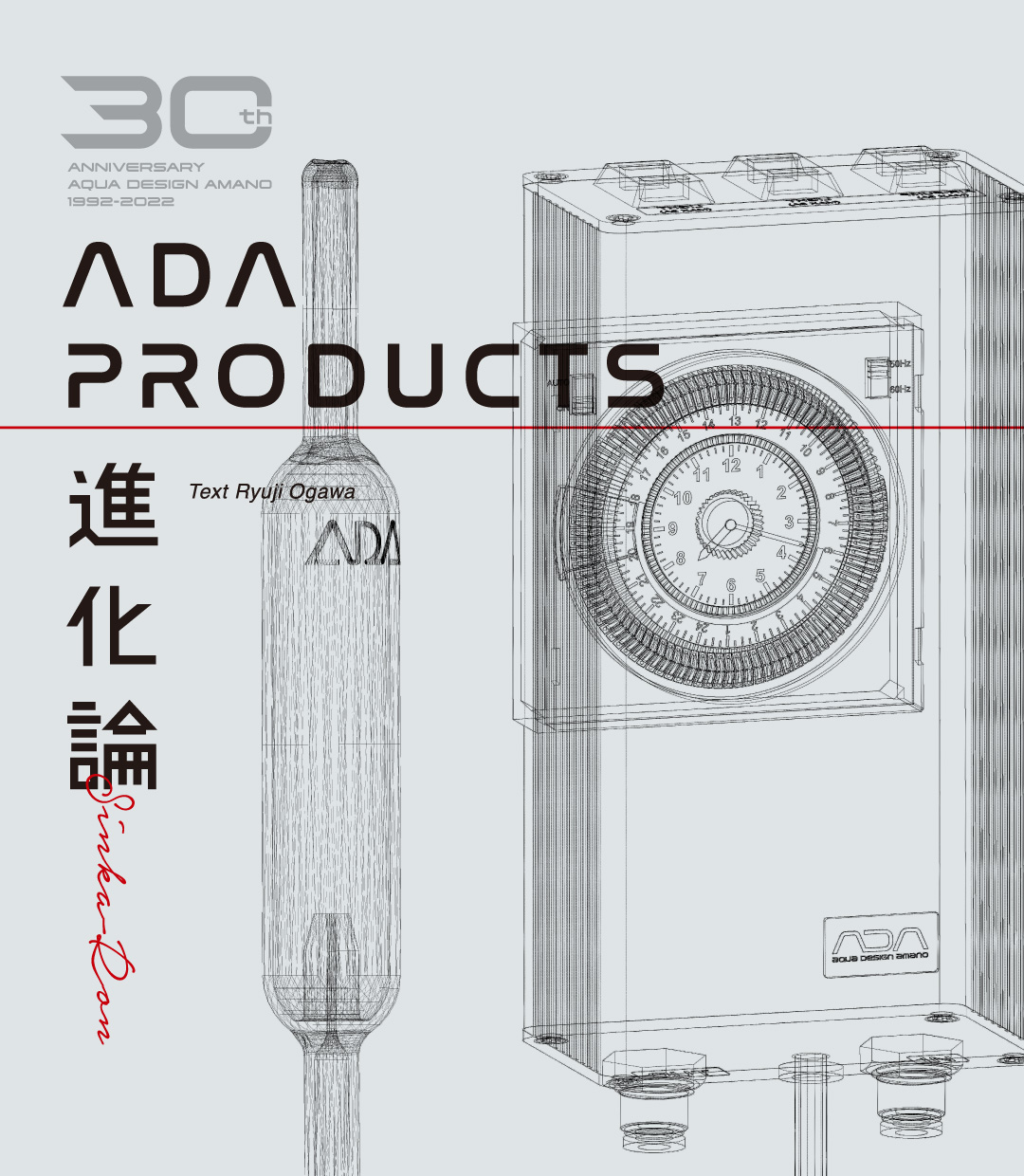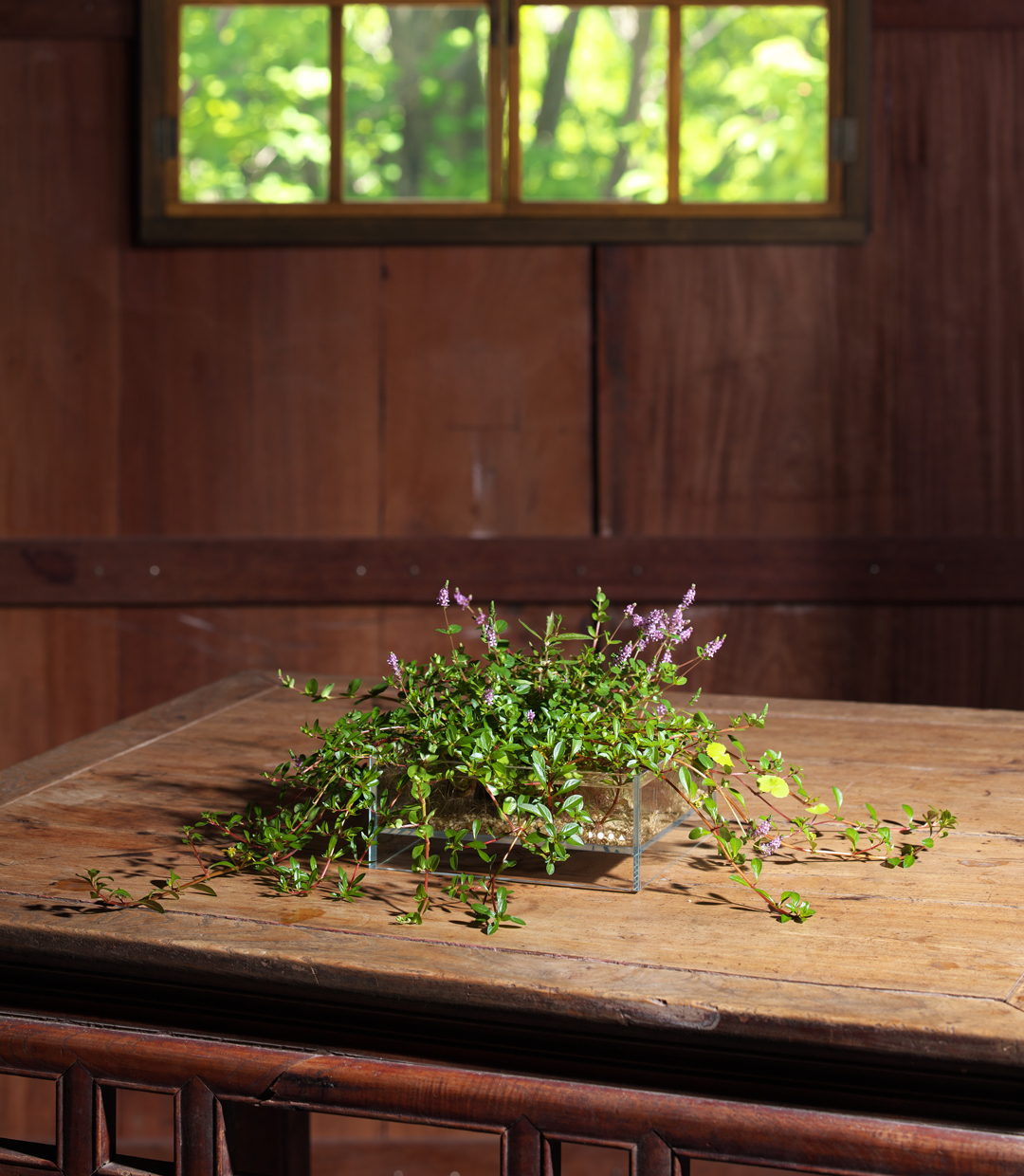NATURE IN THE GLASS ‘An Aquatic View Colorfully Decorated with Flora and Fauna’
The basis of Nature Aquarium
The lively and beautiful underwater world produced by aquatic plants and fish
Producing a beautiful underwater world in an aquarium where aquatic plants and fish live together is the basis of Nature Aquarium. The health of aquatic plants and fish is maintained by incorporating the idea of a natural ecosystem in nature and utilizing the working of micro oganisms. Nature Aquarium cannot exist if any one of the three essentials (aquatic plants, fish, and microorganisms) is missing. I became inspired by the old driftwood with a distinct quality and produced this layout in the image of a scene from a fairy tale. A lively and beautiful underwater world was produced by combining various types of aquatic plants and fishes.
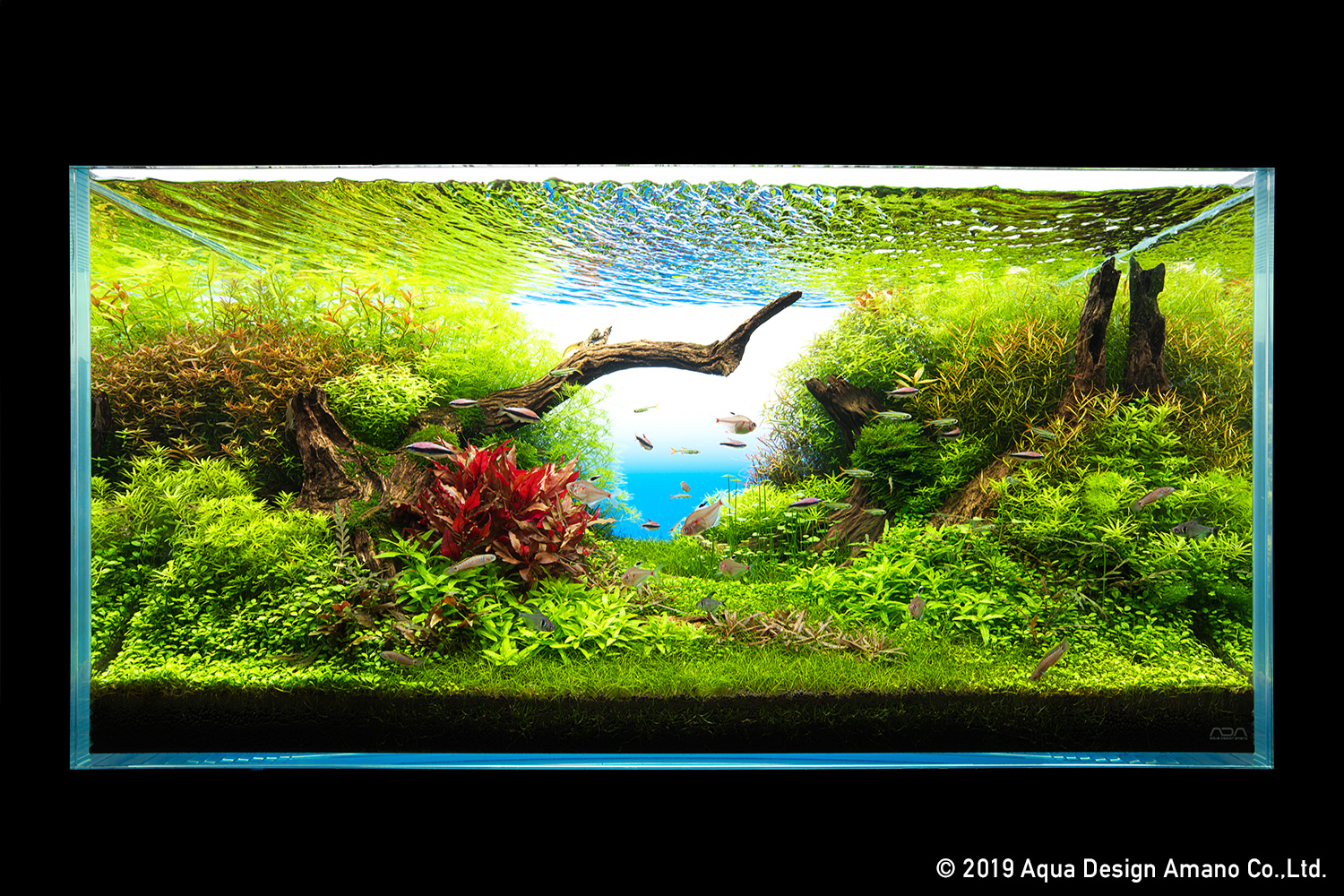
DATA
Shooting date: June 15th, 2018(ADA)
Creator: Yusuke Homma
Aquarium: Cube Garden W90 x D45 x H45 (cm)
Lighting: Solar RGB x 1, turned on for 10 hours per day
Filter: Super Jet Filter ES-600 (Bio Rio, NA Carbon)
Substrate: Aqua Soil Amazonia, Power Sand Advance M, Bacter100, Clear Super, Tourmaline BC
CO2: Pollen Glass Large 30Ø, bubbles per second via CO2 Beetle Counter (using Tower)
Additives: Brighty K, Green Brighty Mineral, Green Brighty Iron, Green Brighty Nitrogen
Water change: 1/3 once a week
Water quality: Temperature: 25ºC; pH: 6.8; TH: 20 mg/l
Aquatic Plants:
Glossostigma elatinoides
Eleocharis parvula
Rotala rotundifolia “Green”
Rotala sp. Hra
Ludwigia arcuata
Scrophulariaceae sp.
Hydrocotyle verticillata
Hydrocotyle sp.
Hygrophila sp. “Araguaya Sharp Leaf”
Cryptocoryne wendtii “Brown”
Littorella uniflora
Staurogyne repens
Hottonia inflata
Hygrophila pinnatifida sp. “Uttara Kannada”
Hygrophila polysperma
Myriophyllum matogrossense
Ludwigia glandulosa
Alternanthera reineckii “Cardinalis”
Eleocharis vivipara
Taxiphyllum barbieri
Vesicularia sp.
Fish & Invertebrates:
Hyphessobrycon socolofi
Inpaichthys kerri
Megalamphodus megalopterus
Ladigesia roloffi
Tateurundina ocellicauda
Crossocheilus oblongus
Otocinclus sp.
Caridina multidentata
Planting and trimming of aquatic plants with a consideration of their growing speed
In the case of a layout in which a large variety of aquatic plants are combined, such as this layout, it is important to select the types of aquatic plants and decide on their planting densities based on not only the forms of the individual plants and the sizes and colors of their leaves but also the differences in their growing speeds. Slow growing aquatic plants cannot grow well and decline eventually if covered up by surrounding fast growing plants. However, small differences in the growing speed can be mitigated through trimming. Let us examine the planting in this layout and the key points for trimming.
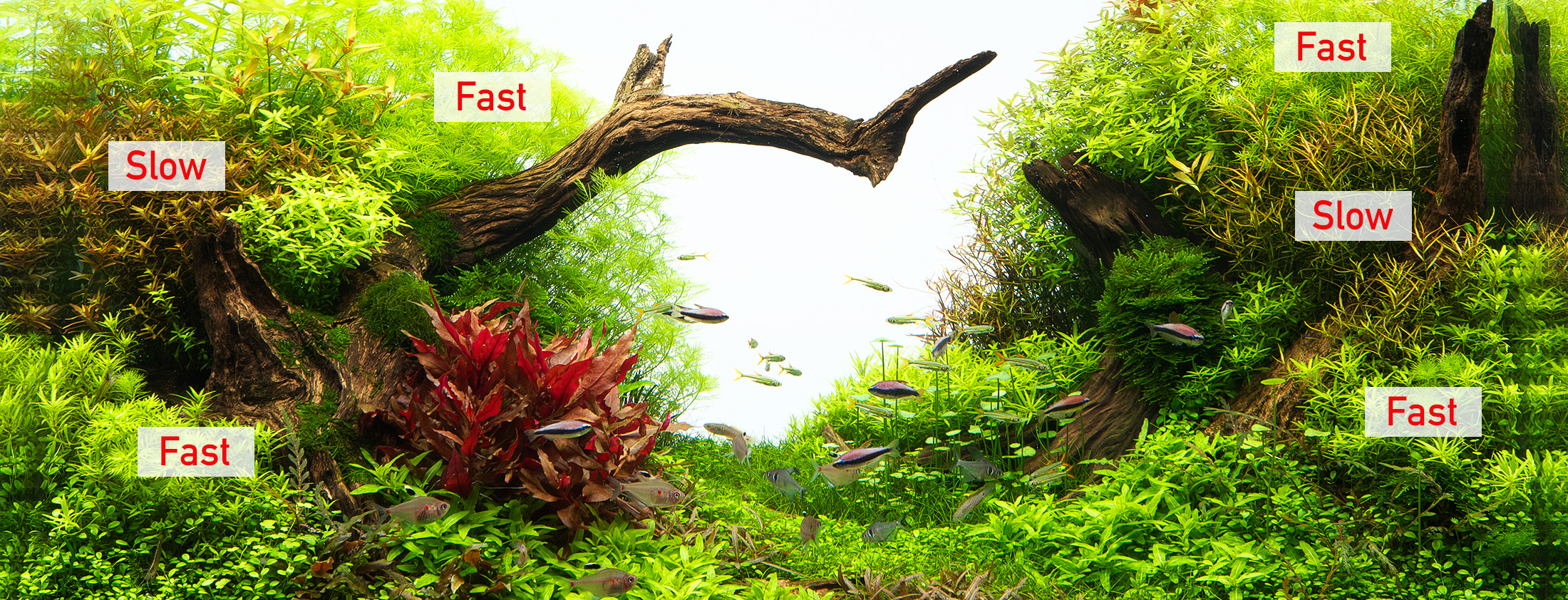
Since aquatic plants with different growing speeds are planted in all areas of the layout, it was difficult to bring all the plants to the finished state at the same time. The timing for the layout completion was coordinated by changing the cut length depending on the plants during trimming.
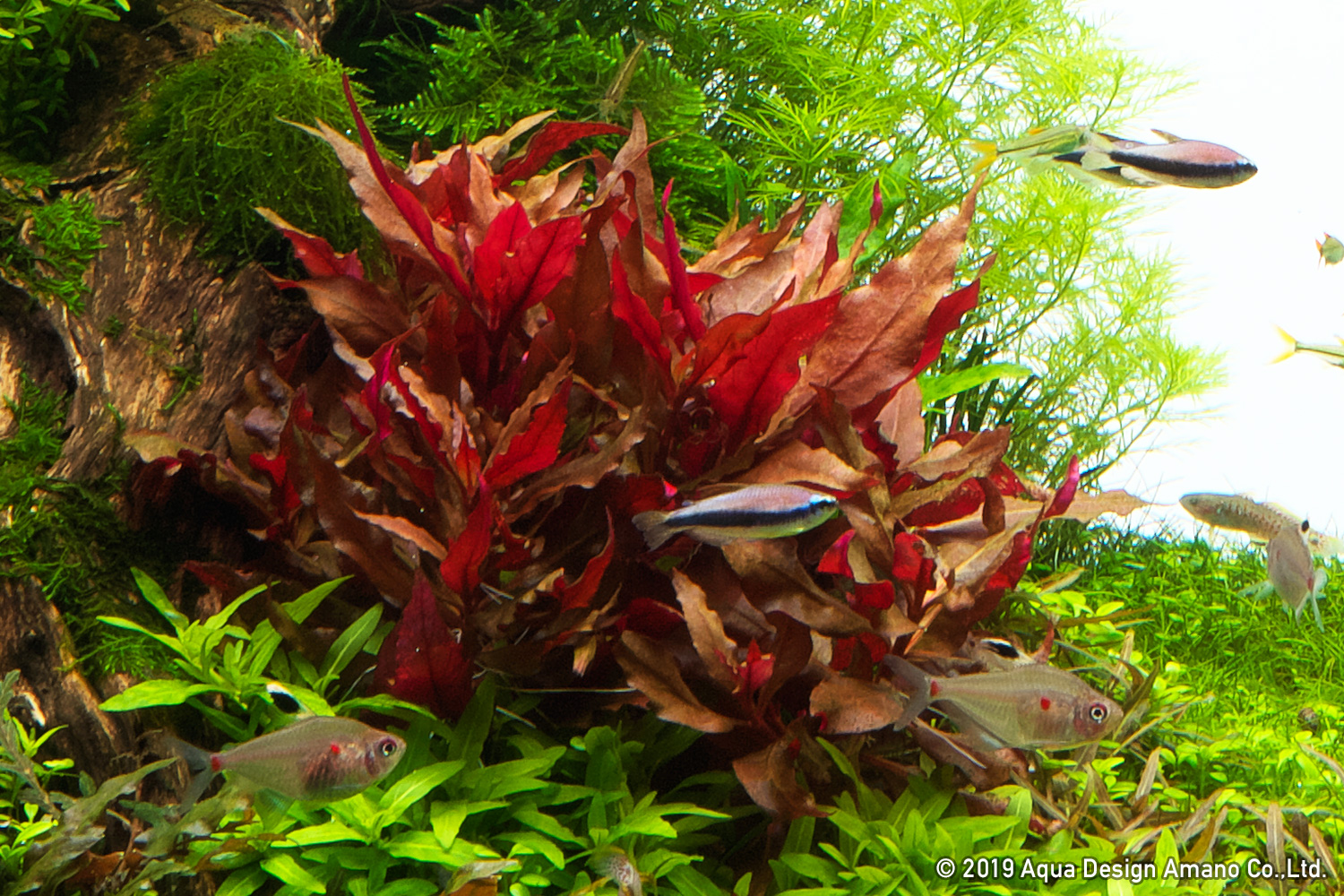
Since the focal point of the layout, the red stem plant Alternanthera cardinalis, grows fast, its height was adjusted by cutting and replanting its upper parts to match the growth of other stem plants.
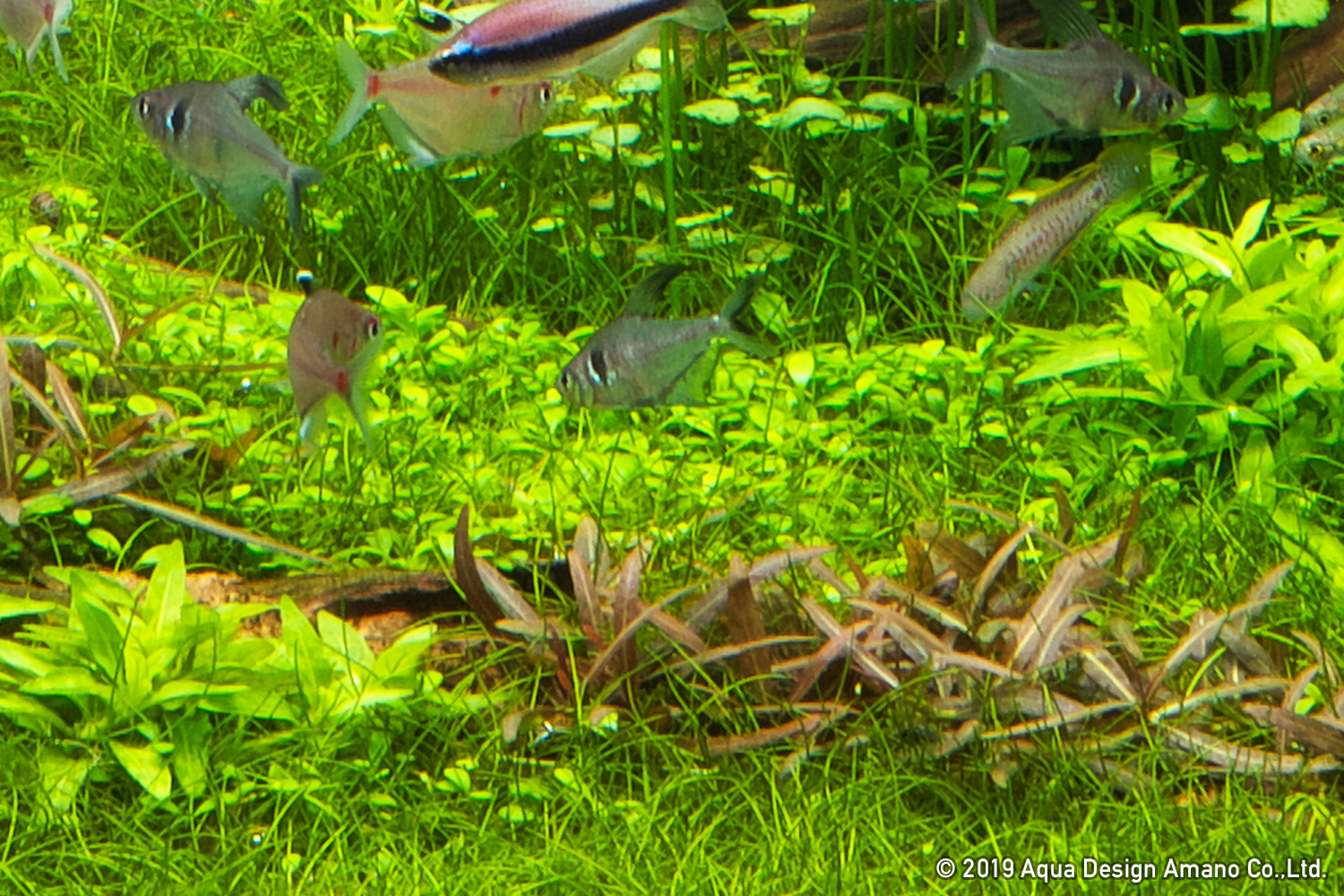
Glossostigma and Eleocharis parvula in the foreground were mixed intentionally at the boundary between the two so that they blend naturally. The Eleocharis parvula was trimmed short to keep it from getting too long.
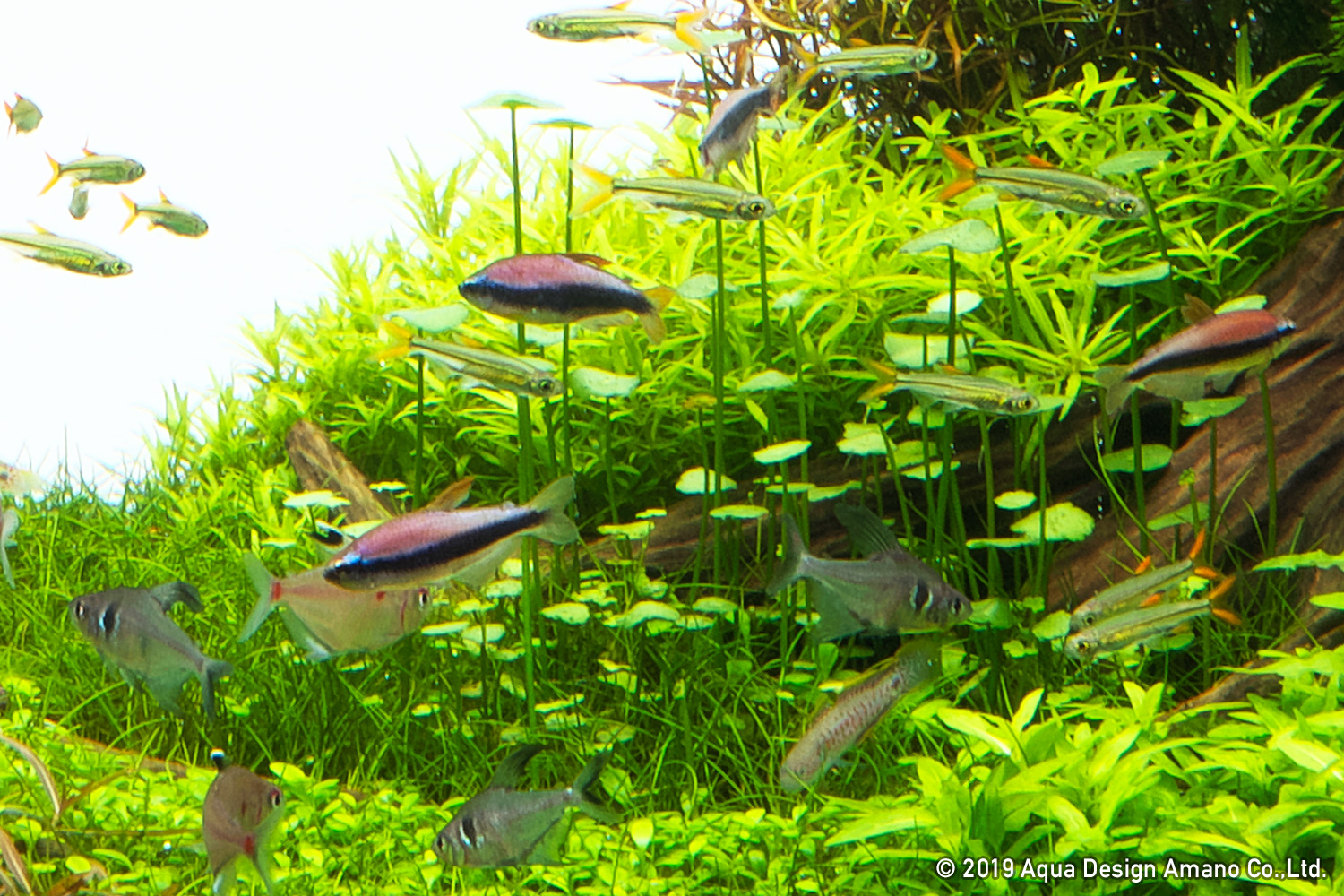
Hydrocotyle verticillata was planted as an accent. It was trimmed periodically to keep it from spreading too much. Individual plants were planted densely from the start since they tend to grow sparsely if the amount of light is low.
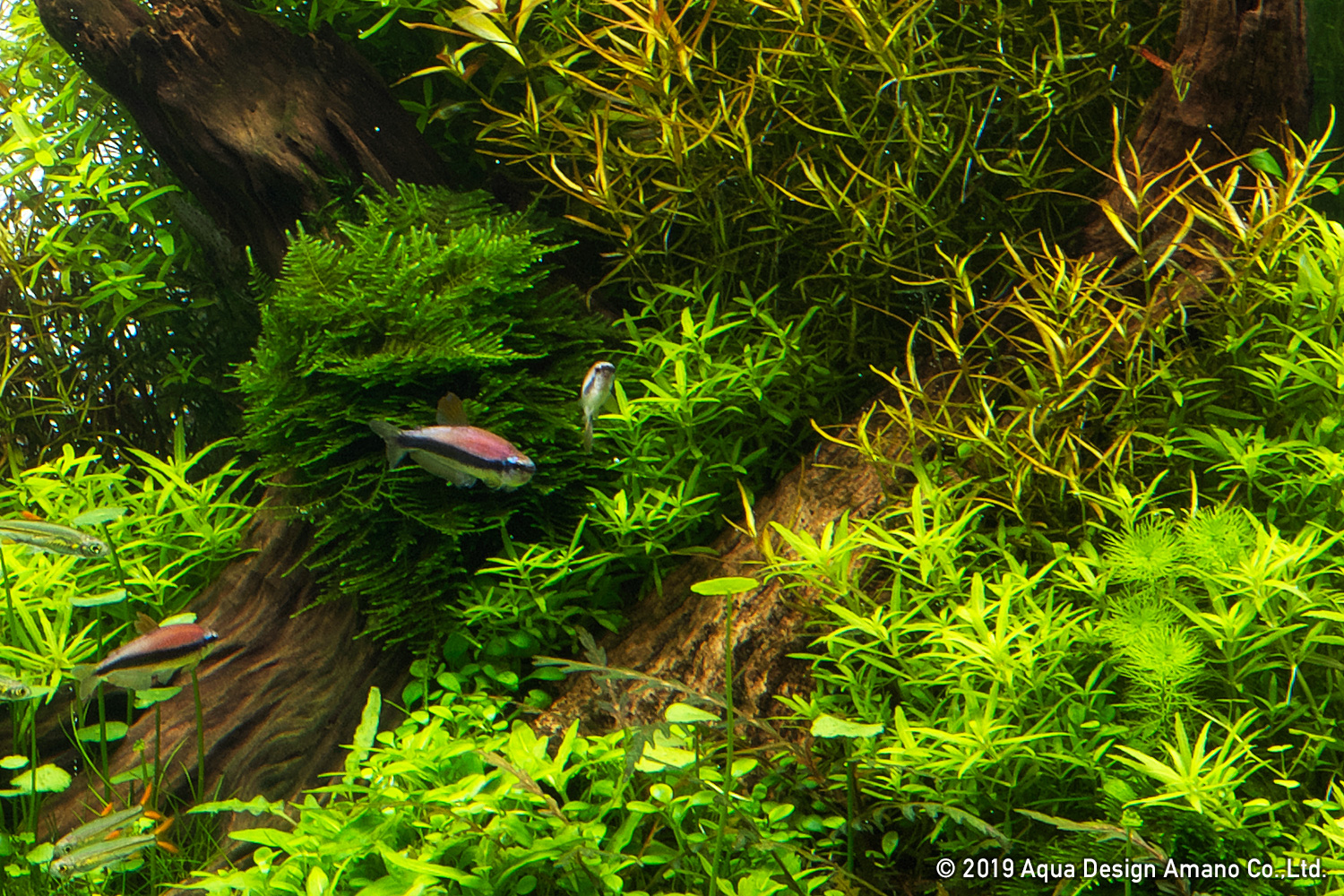
Scrophulariaceae sp. is planted densely between the two pieces of driftwood placed in the right hand side to prevent Aqua Soil from spilling out.
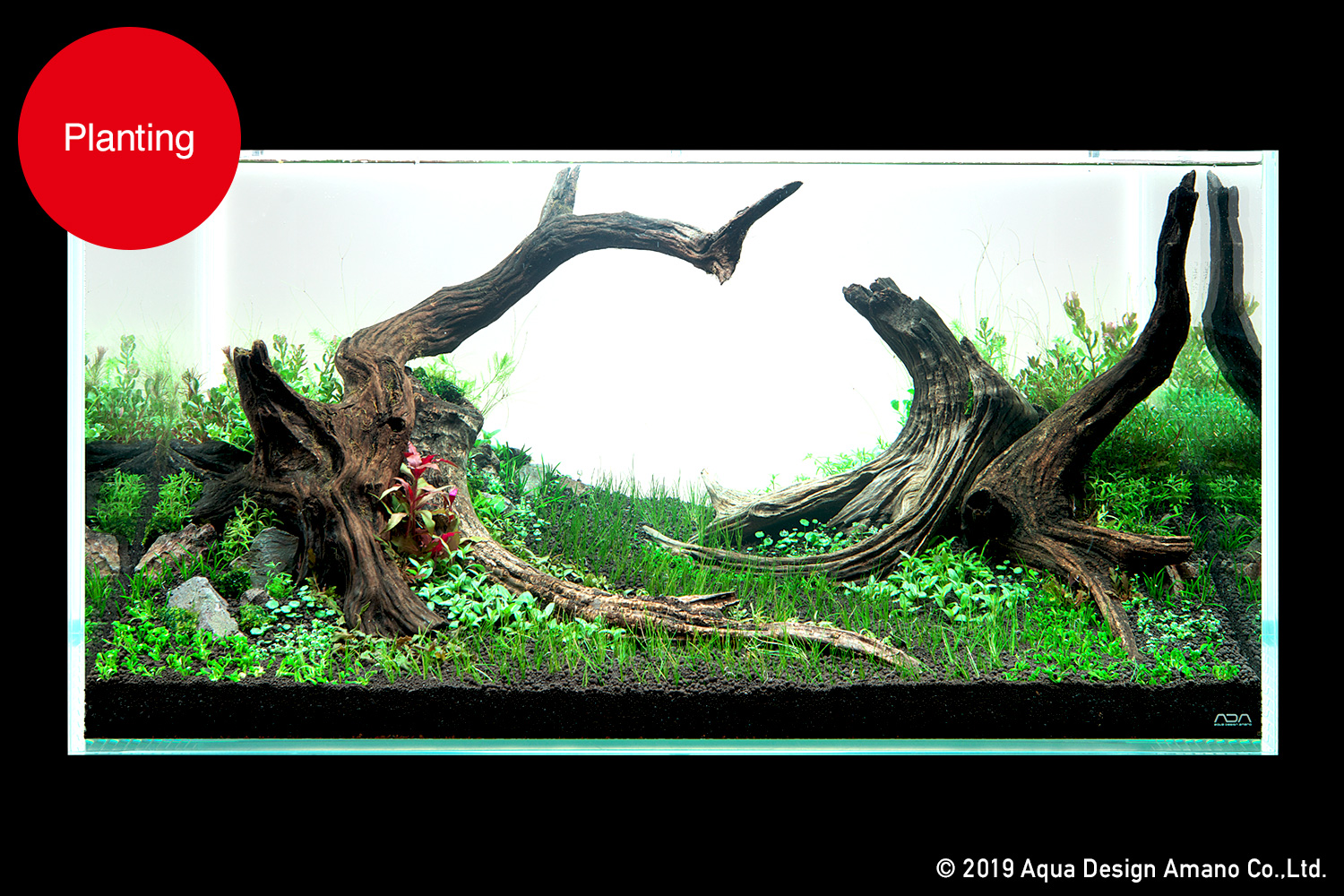
A composition with a fairytale-like atmosphere was produced by placing the driftwood branches with unique shape and texture, and creating an open space in the center.
Photographed on February 16, 2018.
Photographed on February 16, 2018.
